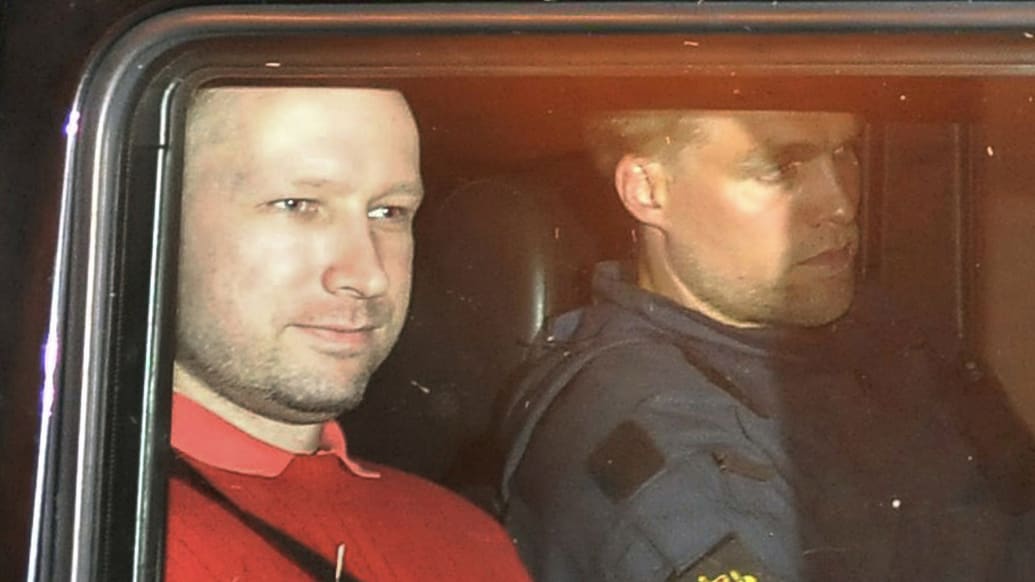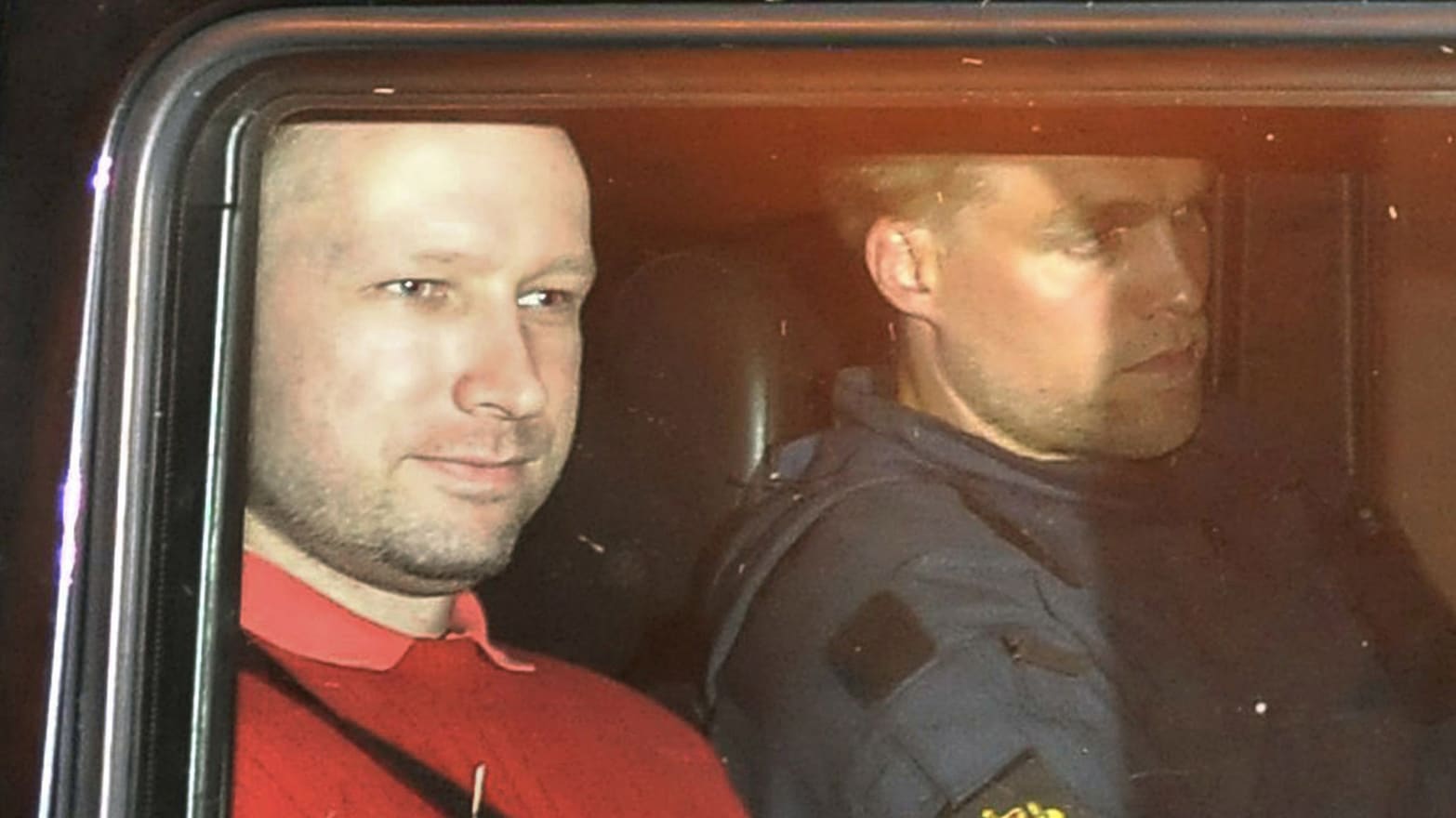The failed businessman who became Norway’s worst killer, was a victim not of Muslim immigrants, but of childhood trauma.
At approximately 17:20 on Friday 22 July 2011, after having attacked Oslo’s main government buildings with a fertilizer bomb, Anders Behring Breivik arrived on the lake island of Utøya dressed as a policeman. Armed with a Glock pistol and a Ruger rifle, Breivik walked calmly around the island, systematically killing members of the Youth League of the ruling Labor Party who were there on summer camp.

Bodies piled up as fleeing young people were trapped on the shores of the cold lake. The entry wound of one of the victims was in the palate, indicating that the girl was screaming or begging for her life when Breivik pulled the trigger at close range, execution style. When he was apprehended by the police at 18:34, he had killed 69 people on the island while a further eight were killed in the explosion, making a ghastly tally of 77 victims. The average age of the Utøya dead was 19.
As smoke rose from the city centre in Oslo and desperate messages came in from Utøya, it seemed Norway was under an attack of geopolitical dimensions. The perpetrator, however, turned out to be one of my neighbors from western Oslo, a 33-year-old son of a diplomat whose graffiti tag is still visible on a wall in my street. How did peaceful Norway produce one of the worst killers in history?
Breivik posted a 1,500 page manifesto online in which he blamed the Labor party and the European elites for colluding with Arab states in order to swamp Europe with Muslim immigrants. The “Eurabia” conspiracy theory is associated with the so-called counter-jihadi movement, and Breivik had apparently been radicalized in sect-like corners of the web. Yet questions lingered. If seemingly normal people could go online and emerge a few years later as killing machines, should there be more police surveillance and stricter legislation on hate speech?
When I published A Norwegian Tragedy; Anders Behring Breivik and the Massacre on Utøya in Norway last fall (the English edition will be released by Polity Press in the UK and US in November 2013), the book was controversial because I disclosed information about Breivik’s background that had not been made public earlier. After interviewing witnesses and delving into Breivik’s background, the ideological level of the 1500 page manifesto appeared to be a cut and paste surface of a text that was strangely autobiographical and dealt with the transformation of the consumer “zombie” Breivik into his avatar, “Justiciar Knight Andrew Berwick”. Breivik’s personal traumas and conflicts are blown up to an enormous scale and transferred onto a broad civilizational canvas, in which their historical solutions are brought about by the Justiciar Knight.
The development of Breivik’s idiosyncratic psychopathology appeared to have roots in child abuse, according to a confidential report of psychiatrists who observed Breivik and his family in the early 1980’s. Breivik was raised by a single mother who appears to have been seriously depressed and with an emotionally unstable personality. She had a particularly “pathological” relationship to her son, according to the report, at the same time “symbiotic” and aggressive. She held him close in bed at night while telling him she wished him dead during the day, describing the three year old boy as a violent threat to women. According to the report, Breivik was a ‘victim of his mother’s projections of paranoid aggressive and sexualized fear of men in general’.
The combination of emotional abuse and overt sexualization resulted in an attachment disorder. Breivik was of normal intelligence, but withdrawn and “deviant”, and the psychiatrists strongly recommended that he should be taken from his mother. In 1983 Breivik’s father asked for custody, but both the court and the Child Welfare unit disregarded the warning of the experts and Breivik stayed with his mother.
As an adolescent Breivik tried to join violent and criminal gangs then emerging in Oslo, but always failed. He was rejected by the immigrant gangs, he was unable to get into graffiti crews and he was kicked out from an ethnically Norwegian nationalist gang. It seems the reactive attachment disorder of the child evolved into a budding personality disorder: His craving for recognition and inability to understand social relations are pointed out by those who knew him. Although he did have friends, romantic and sexual relationships were few and did not last long. He remained an outsider until he withdrew from society at the age of 27, moved home with his mother and spent the next five years in front of the computer screen, fashioning his avatar.
The manifesto is a deeply misogynistic and sadistic text, which tells how patriarchy will be re-established in an ideal future European super state in the year 2083. The problem of mothers is solved by having children born by artificial wombs and raised in state-run homes. In what appears to be a direct reference to his biography, the first law of the future state is that fathers always will have custody over children in case of divorce. The establishment of the state will be marked by an “official celebratory lynching” of hundreds of thousands of Marxist “traitors”.
While extremist ideology was a crucial ingredient in the creation of Breivik’s deadly avatar, his hatred appears rooted in childhood trauma. Spurred by grandiosity and protected by paranoia, lack of empathy and alexithymia (inability to express emotions), Breivik nurtured and refined feelings of shame and revenge fantasies until they erupted with enormous force. Breivik was caught by the system when he was a small child, but the system let him go. If he had been given care by a normal family, would he still have gone to Utøya? The question is of course unanswerable, but the lesson of Breivik’s case is that radicalization may have deep roots. Prevention of terror starts at home. “The hand that rocks the cradle, moves the world,” as Breivik said to the forensic psychiatrists.
In elections in September 2013, the Labor Party was voted out of office and replaced with a conservative coalition that includes the Progress Party, a populist party which once counted Breivik as a member. Commentators asked whether Norway had learnt anything from 22 July: Did Breivik “win”, as a Swedish journalist suggested? The Progress Party’s entry into government is hardly a right wing revolution, however, but rather the result of the party’s gradual drift towards the political center. Its views on integration and immigration are not very different from the Labor party.
Breivik’s stated aim was to spread conflict, but his acts brought Norwegians together. In hindsight it seems that 22 July marked a watershed: The national “we” came to include the half million or so Norwegians of foreign backgrounds. Norway in 2013 may be sickeningly wealthy, but it’s not a seething nest of Breivikings.
Even strong societies can produce radical outsiders. Is Norway better equipped today to handle not only failures of the police, but of some families? Whether lessons have been learnt, and what the consequences of Breivik’s murderous rampage will be, I think, is still far too early to tell.
